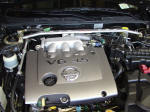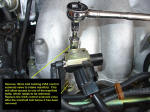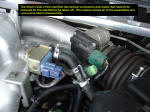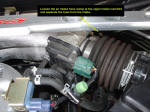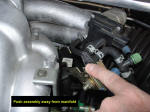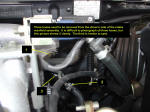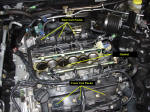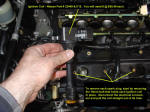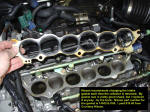Gas-electric hybrids are among the most miserly rides on the road when it comes to fuel economy. But how do they compare to each other?\
Maybe we’re used to them by now: Hybrids silently sliding up behind us in the grocery store parking lot or on the street in front of the pharmacy, the only identification being a slight hum or a green badge on the tailgate. Whether they’ve become commonplace or not, we shouldn’t downplay that hybrid drive systems represent a colossal leap forward in terms of environmentally conscious automotive technology — and there have been only a handful of big jumps in the last century. Like that prehistoric guppy morphing into a landlubber, the addition of electric power is auto evolution in the making. In 2000 just one hybrid was available in the U.S. The 2009 model year has 20 from which to choose. But are all of them created equal?
We decided to put them to the test and wrangled up the 10 most efficient hybrids available in the U.S. We based our list on the Environmental Protection Agency’s fuel economy stats. Incidentally, these ratings have been updated starting with model year 2008. They are now more accurate, taking in real-world factors including cold weather, faster acceleration and air conditioner use. In fact, many drivers now find they get better mileage than what’s printed on the EPA window sticker. Here’s how the hybrids ranked:
We decided to put them to the test and wrangled up the 10 most efficient hybrids available in the U.S. We based our list on the Environmental Protection Agency’s fuel economy stats. Incidentally, these ratings have been updated starting with model year 2008. They are now more accurate, taking in real-world factors including cold weather, faster acceleration and air conditioner use. In fact, many drivers now find they get better mileage than what’s printed on the EPA window sticker. Here’s how the hybrids ranked:
Toyota Prius
 Click picture to enlarge
Click picture to enlarge
Though the Toyota Prius sacrifices performance in the pursuit of fuel-efficiency, its interior is well-built and reasonably comfortable.
Love it or loathe it, the Prius is the most fuel-efficient car you can buy in America. The poster child for the green revolution is also the most popular hybrid in the world, with more than 1 million sold. The EPA ranks the 2009 model at 48/45 mpg (city/hwy). At its heart is Toyota’s Synergy Drive, which debuted in 2003. It is the same technology found in the Toyota Camry and Highlander hybrids, and also is licensed by Nissan for their hybrids, as well as Ford, but to a lesser extent. The manufacturer’s suggested retail price for a 2009 Prius runs from $22,000 to $24,270, depending on trim level.
 Click picture to enlarge
Click picture to enlarge
Honda's fuel-sipping Civic lineup has just been updated — albeit barely — for 2009 with a midcycle enhancement and the addition of two new sedan trim levels.
Honda’s Integrated Motor Assist pairs an i-VTEC engine with an electric motor, bumping the mpg up to 40/45 (city/hwy). With 90.9 cubic feet of passenger space and 10.4 cubic feet of storage, the Civic is slightly less spacious than the Prius. However, the hybrid Civic’s five-star frontal crash rating beats four stars for the Prius. The Civic Hybrid’s base MSRP is $23,550; leather and a nav system will bump you up to $26,750. Federal tax incentives are still available for the Civic Hybrid, but after the end of 2008 they’re gone. Prius incentives are already history.
Nissan Altima Hybrid
 Click picture to enlarge
Click picture to enlarge
The Nissan Altima is largely unchanged for 2009, although the automaker is expanding availability of its gas-electric hybrid model.
Drivers demanding more performance should take a look at Nissan’s Altima Hybrid. With a 40-horsepower electric motor alongside its 2.5-liter 4-cylinder engine, it has the feel of a V6. But at 35/33 mpg (city/hwy), it doesn’t burn gas like one. With a $26,650 MSRP, the Altima is trying to give the hybrid Camry a run for its money, but only in the nine states where it’s available: California, New York, Massachusetts, Connecticut, Vermont, Oregon, Rhode Island, Maine and New Jersey.
Escape/ Tribute/ Mariner Hybrids (2WD)
 Click picture to enlarge
Click picture to enlarge
The Ford Escape, Mazda Tribute and Mercury Mariner Hybrids are basically all the same under the sheet-metal facade. Talk about two too many.
Although Ford claims its Escape Hybrid is “the most fuel-efficient SUV on the planet,” it is actually in a three-way tie with two other compact SUVs: the Mazda Tribute Hybrid and Mercury Mariner Hybrid. We’ll cover the triplets together, since they bear the same vital stats. The 2009 models of these three compact SUVs test at 34/31 mpg (city/hwy) in their front-wheel-drive models. However, all three compact hybrid SUVs drop to 29/27 mpg when adding four-wheel drive. All three carry the same 2.4-liter 4-cylinder engine that is paired with an electric motor and nickel-metal hydride battery pack. While these compact SUVs offer only a bit more passenger space than a Prius, there is much more cargo space to be found behind the rear seats.
Toyota Camry Hybrid
 Click picture to enlarge
Click picture to enlarge
Unchanged for 2009, the Toyota Camry is soft on sport and excitement, but offers good to great levels of comfort, convenience and options.
its size to go gas-electric, the Highlander Hybrid treads the line between power and efficiency. A 3.3-liter V6 offers a net output of 270 horsepower. Even with standard 4WD, the hybrid Highlander rates at 27/25 mpg (city/hwy), with an MSRP ranging between $34,700 and $41,020.
Chevrolet Malibu Hybrid
 Click picture to enlarge
Click picture to enlarge
Nicely designed inside and out, with solid overall performance and an attention to detail, the Chevy Malibu Hybrid is an example of what GM can do when motivated.
The hybrid incarnation of the Malibu is part of a growing family of American-made fuel-sippers. Driving a hybrid Malibu will feel different from a Prius or Camry. Aside from the aesthetics, Chevy’s gas-electric powertrain is what in industry jargon is called a “mild hybrid.” The car will get a burst from the electric motor during acceleration, and the battery will recharge during coasting and braking. The gas motor will also shut off when the car is at a standstill. But unable to run on electric power alone, this Malibu gets 26/34 mpg (city/hwy), a small improvement over the 22/33 mpg of the non-hybrid Malibu.
 Click picture to enlarge
Click picture to enlarge
The Saturn Aura Hybrid possesses an attractive design inside and out, a quiet cabin, a comfortable ride and top safety scores, but fuel economy isn't what it could be.
Packing the same “mild hybrid” system and 4-speed automatic gearbox as the Malibu, Saturn’s 5-seat hybrid Aura offers the same 26/34 mpg (city/hwy). Both the Aura and Vue are part of Saturn’s growing family of hybrids, which was dubbed Green Line until the label was dropped this year. Saturn is claiming “very limited availability” for the Aura, but if you can find one you’ll meet an MSRP of $26,685.
Saturn Vue Hybrid
 Click picture to enlarge
Click picture to enlarge
GM claims fuel economy for the Saturn Vue 2 Mode will be 50 percent better than that of the gas-only V6, and have a range of more than 500 miles.
The other hybrid feather in Saturn’s cap is the Vue, the first GM model to go hybrid back in 2006. A 2009 Vue Hybrid pulls in 25 mpg driving in the city, 32 mpg on the highway. The 2009 model year was supposed to see the Vue available with GM’s more advanced 2-Mode hybrid system—the same used in the Tahoe and Yukon hybrids. But financial trouble has delayed a 2-Mode Vue until the first quarter of 2009.
Lexus GS 450h
 Click picture to enlarge
Click picture to enlarge
Lexus claims that the hybrid system in the GS 450h will perform like a 4.5-liter V8, producing substantially more than 300 horsepower and doing zero to 60 mph in less than six seconds.
Tuned for exhilaration rather than efficiency, the 450h packs a V6 alongside its Lexus Hybrid Drive. Lexus claims the car can leap from zero to 60 in 5.2 seconds, making it Lexus’ fastest hybrid. But it comes at a price, both in mpg and dollars. This rear-wheel-drive sport sedan tests at 22/25 mpg (city/hwy), and the MSRP starts at $56,400.
